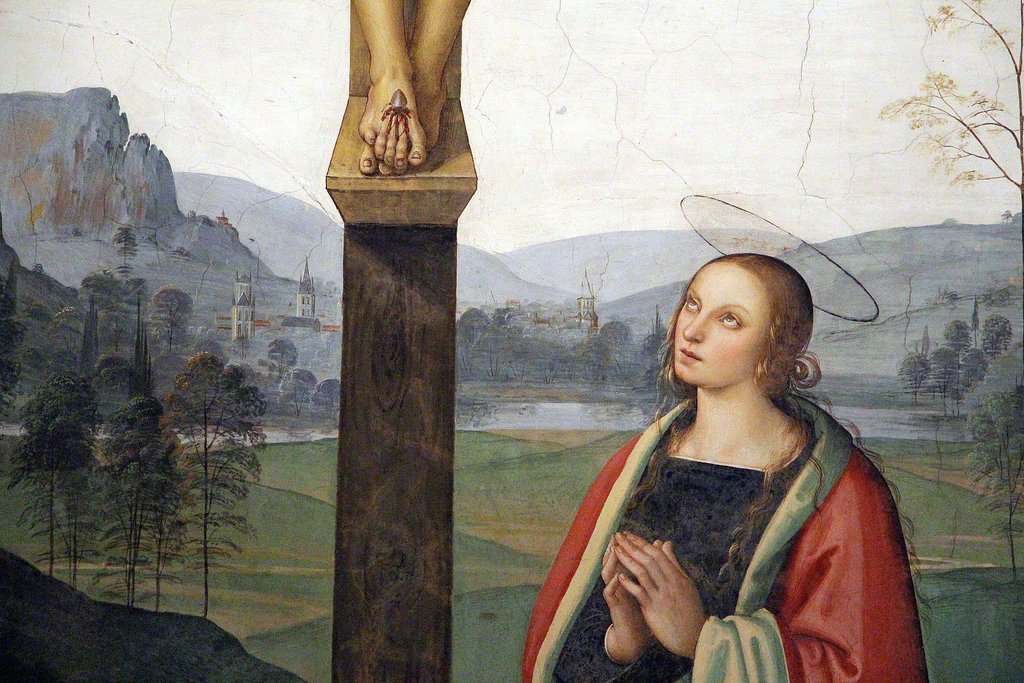Off the Beaten Path in Florence
Indeed, there is a lot more to the city than its famous cathedral, the Uffizi, and "The David". Take some time to check out these lesser visited attractions and activities to really get under the skin of Florence. The places below range from specific locations to outdoor activities, and all are relatively accessible on foot or by bus.
Paddle Under the Ponte Vecchio

Yes, it really is possible to SUP in Florence with local outfit Toscanasup. Two-hour sessions offer a unique perspective of the Arno and the underside of Italy’s most famous bridges (tours usually run in the early morning or at sunset). Paddle beneath the Ponte Vecchio, pass the Uffizi and Palazzo Corsini, and up to the Ponte Santa Trìnita, the other celebrated Renaissance bridge totally rebuilt after being destroyed in World War II.
Visit the Peruvian Mummies
This is not what most people associate with Florence, but visit the Museo di Storia Naturale and you’ll get to see a group of Peruvian mummies, literally the petrified remains of Incas buried near Cuzco over 500 years ago: the skulls, some still with scraps of hair, are a little ghoulish, and there are also small babies wrapped in cloth and rope. In 2004 an Italian anthropologist suggested that one of the mummies was the inspiration for Edvard Munch’s painting "The Scream”—you get the picture. Elsewhere there are pygmy bows and arrows and an Inuit jacket made from whale stomach.
Galleria Luigi Bellini
This reservation-only art gallery (operated by a long line of antique dealers) is worth the effort to visit—it’s like strolling around your own private museum. Among the treasures inside are frescos by the Giotto school, a bust attributed to Donatello, a Madonna by Florentine Renaissance sculptor Luca della Robbia, a bronze by Flemish sculptor Giambologna (based here in the 16th century), a portrait of Venetian master Tintoretto, and a chest carved by celebrated sculptor Andrea Sansovino.
Chat with a local specialist who can help organize your trip.
Cycle the Arno

Florence has developed an ambitious network of bicycle paths in recent years, but it also lies on the Ciclovia dell’Arno bike trail, which follows the River Arno from its source all the way to its mouth near Pisa—the section through the heart of Florence is especially enchanting. Bike rentals are easy to find (and relatively cheap). E-bikes (ordinary bicycles with battery-powered motors) are also readily available.
See the Human Waxworks
La Specola, the zoological section of the Museo di Storia Naturale, is best known for its rather gruesome Cere Anatomiche (“human anatomical waxworks”), created between the late 18th- and early 19th centuries. The 1400 wax models of arms, legs, cadavers, and various organs are very lifelike (since 2017, you must be accompanied to see many of them). The final room is particularly grisly: three tableaux created by Gaetano Zumbo for Cosimo III depicting Florence awash with the Plague, with rats, rotting flesh and heaps of the dead.
Shop with the Locals
The Tuesdays-only Mercato delle Cascine is a no-nonsense local affair (held in the Parco delle Cascine, overlooking the Arno), selling cheap clothes, local fabrics, some fruit and veg, basic household items and fun Tuscan street snacks. There are some genuine secondhand items and antique stalls, but this isn’t really a flea market or a farmer’s market. Tourists generally stay away, but it’s an essential slice of contemporary Florentine life.
Sala del Perugino

Tucked away inside the Liceo Michelangiolo (a local school), this free gallery dedicated to Umbrian master painter Perugino occupies the Chapter Hall of the Santa Maria Maddalena de ‘Pazzi convent. Inside are a series of wonderfully preserved frescos of the Crucifixion, the Virgin Mary, and Saints Bernardo and Benedetto, created by Perugino between 1493 and 1496. It’s only open Tuesdays and Thursdays (2:30-5:30 pm), and only when the school is open (i.e. during school semesters)—but consequently is devoid of the crowds common elsewhere in Florence.
Alice’s Mask Studio
This intriguing little shop is crammed with papier-mâché masks handmade by master craftsman Agostino Dessì and his daughter Alice, in classical "Carnevale" style. His shop is like a tiny museum, with Venetian carnival, Sardinian carnival, and Commedia dell’arte masks. Not exactly undiscovered, but far less visited than you might think.
Go for a Swim at Le Pavoniere
The Parco delle Cascine, which runs along the northern bank of the River Arno, west of the city center, features a fabulous open-air swimming pool (dubbed "Le Pavoniere") in the middle of the park (summer only)—the perfect spot to cool off and recharge after all that Renaissance art. It comes with a poolside bar, restaurant, pizzeria, and smaller kids’ pool.
Trattoria da Rocco

This excellent restaurant is tucked away in the heart of bustling Mercato di Sant’Ambrogio, an indoor market a short walk east of Santa Croce. It’s one of the best bargains in the city, though it’s a bit of trek from the center of town. Behind the take-out counter is a small seating area, with cozy tables big enough for four. Hearty dishes of lasagna, pasta and roast chicken rarely cost more than a few euros. Get here before 1 pm if you want a table.
